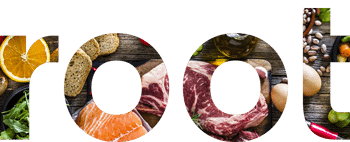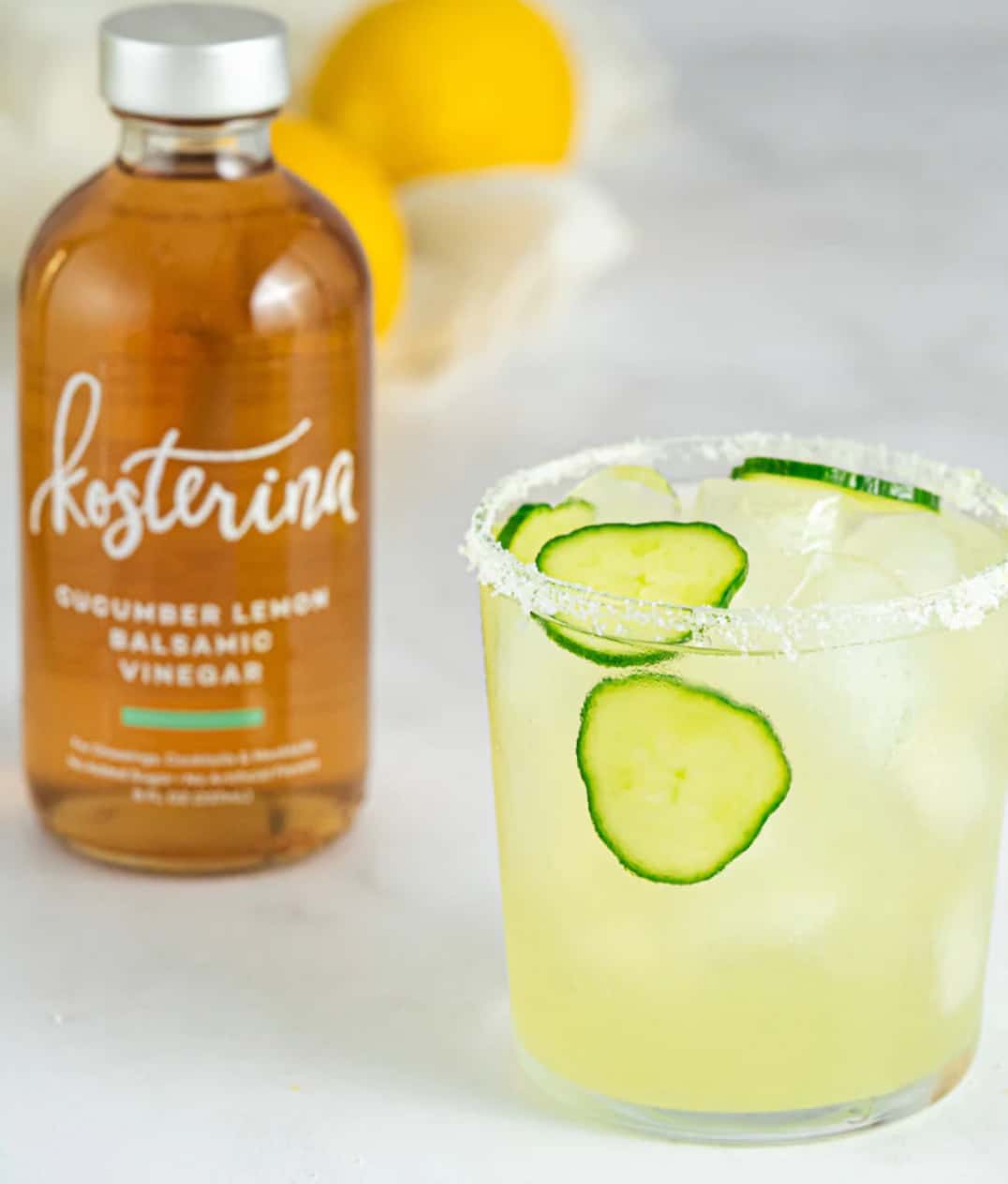We’ve all had to make changes over the past few months, as we adjust to life with COVID-19 in it. We’ve changed our habits, and adopted new technologies for work and life at home. Our circles of influence have shifted and, in many cases, so have our priorities.
At ROOT, we are watching those consumer behaviors closely and looking at the short and long term implications of those changes, as we seek to create meaningful returns on our client’s marketing dollars.
For the literally thousands of brands that make up the U.S. food industry, the disruptions caused by COVID-19 are seismic. For some, there’s an unprecedented demand and growth opportunity, and for others, there’s a real and raw struggle for survival.
Yet, as we look at the big picture, there are some common trends emerging amid the stay-at-home, or social distancing, economy.
Here are some of the most prominent food marketing trends that we expect to become leading tactics for 2021, and some insights into why each will earn their right to become a mainstay in your 2021 tool kit.
Five emerging trends that signal the marketing of the now.
- Marketers are adjusting with unprecedented speed and agility.
- They’re grounding their messaging in shared brand values.
- They are doubling down on immersive experiences through augmented reality (AR) and virtual reality (VR).
- Improving the mobile shopping experience has become a priority.
- Consumer packaged goods (CPG) brands are preparing to enter direct to consumer (DTC) sales in droves.
Frankly, none of these trends are coming out of left field. We all know that COVID-19 is accelerating behavior trends that were already in motion. The disruption of the pandemic is bringing each of these trends into the “here and now” faster than anyone predicted.
1. Speed and Agility
Adjusting and adapting are not new concepts to marketing teams. However, this year, marketers have pulled out all the stops, showing an unprecedented level of agility that might be marketers’ best super power yet.
Not only have brands adjusted their marketing playbook, they’ve already had to re-write their messaging several times over to meet the changing times. While typical production methods have been hampered by stay-at-home orders, that’s not stopping the creative process. Brands have stepped up to develop all new creative assets in turnkey order, without their usual teams and “normal” production processes.
Check out these three speedy production techniques that are getting results.
User-Generated Content:
When COVID-19 hit, many campaigns were already planned and ready to run. Several brands had to shelve their plans altogether, and instead turn to user-generated content to create authentic and meaningful connections in real time with their customers. Here’s a peek at a simple, but effective execution by Silk.
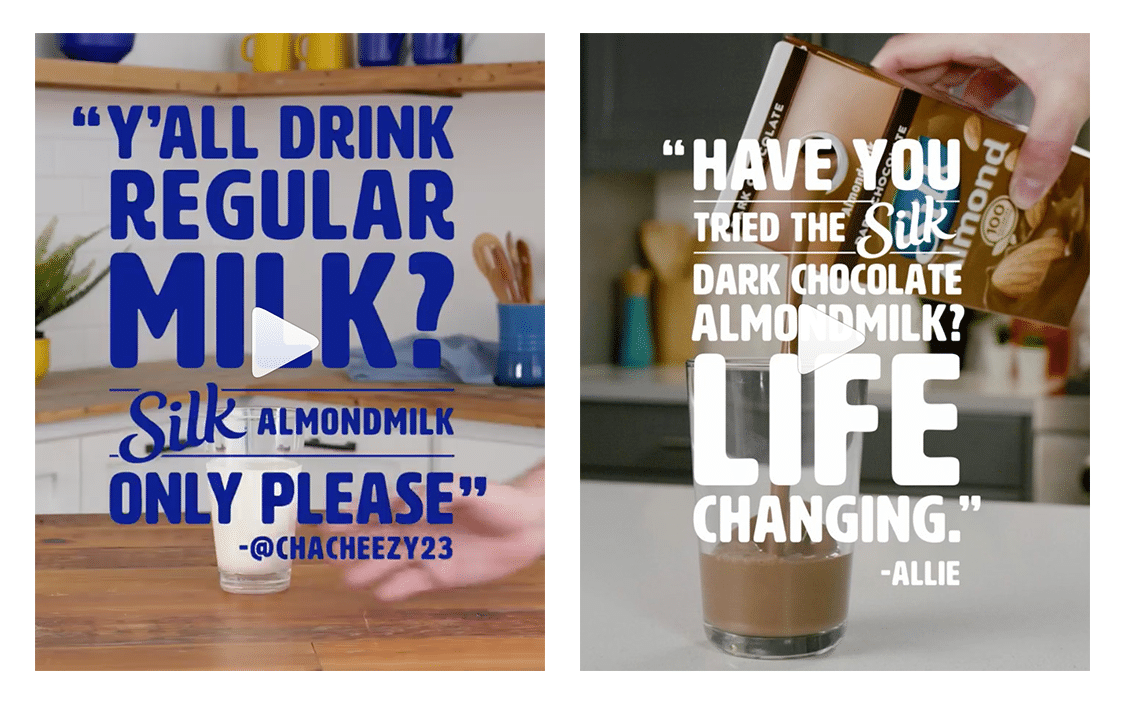
And another example by Brew Dr.
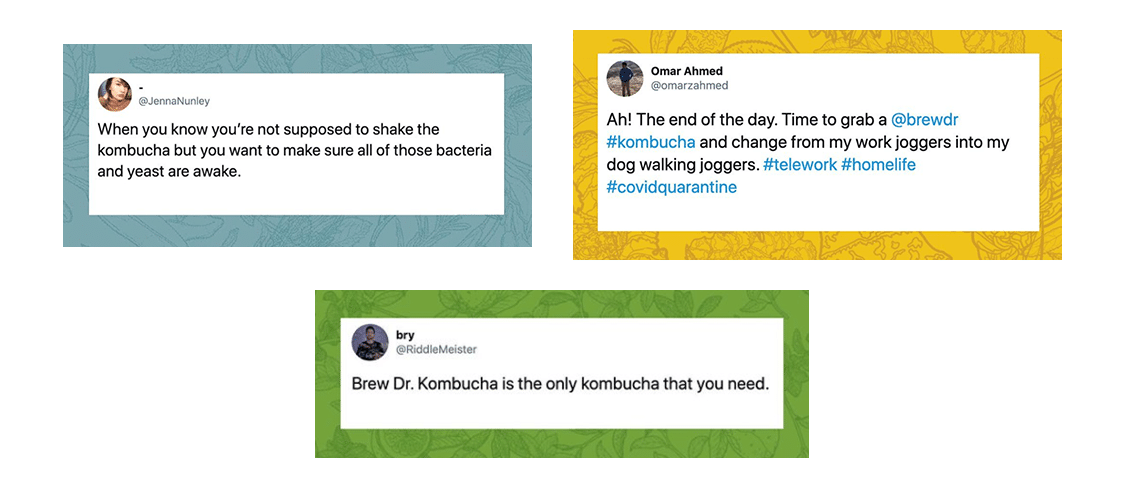
Influencers:
Many brands have turned to influencers for their expert ability to churn out eye-catching, on point social media content from home, in record speed.
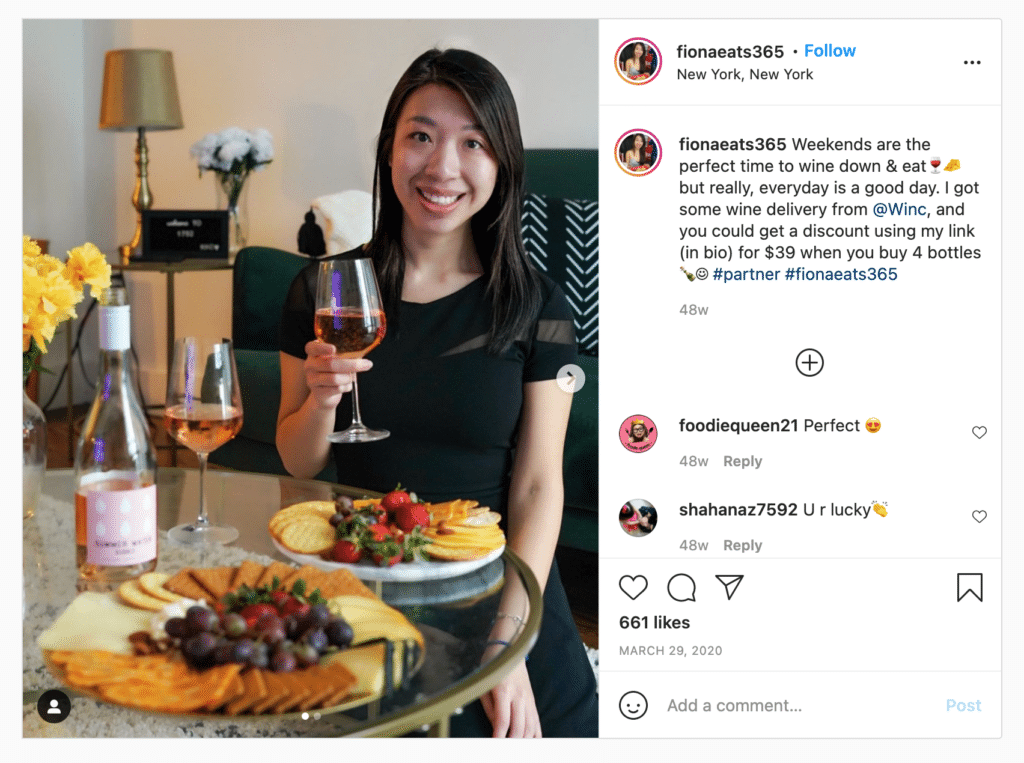
B-Roll Content:
Many brands have leaned into their B roll (alternative) content. They’ve given it a fresh new take with creative cuts and added animation to make it relevant. Presto! Timely and actionable, on-demand content.

2. Values-Based Marketing
Trust is especially critical during this time. As a result, many brands are going back to the basics to demonstrate their core purpose. They are focusing on serving their customers, and offering meaningful messaging and action wherever they can.
Nobody wants to be “sold to”. But we do want to know what is out there that can make our lives better, or solve a problem. In good times, marketers often ask consumers to make a purchase, but in this turbulent time of instability, constantly pushing the sale may seem tone deaf to the consumer.
With many consumers facing financial instability, marketers are turning to what matters most: connection, shared values, and community. Providing a word of compassion, a laugh, or a connection moment says, “we’re here and we’re part of your community.”
Yes, it lacks the direct mention of a purchase and may draw a lower conversion rate in the short term. Nonetheless, you’re building loyalty, and may earn a subsequent return as your customers find their footing and come back to purchase from those who were there during the tough times.
Ben & Jerry’s is well known for their ability to lean into their core values. It’s a long-standing commitment that they continue to stand behind. Here are some recent examples:
3. AR & VR Immersive Experiences
App innovators are going for big impact, creating more engaging and immersive experiences through augmented and virtual reality. This leads to brands gobbling up the new opportunities to build connections with consumers.
Tim Hortons, Canada’s biggest coffee house, is also a long time supporter of independence day celebrations in Canada. They tapped into artificial reality this year to fill the gap for cancelled firework celebrations across Canada. Thanks to Tim Hortons, Canadians experienced fireworks this year with an all new twist. Canadians who visited a special website or downloaded the app, pointed their smartphone camera to the sky on July 1st at 10pm. Here they were treated to a virtual fireworks display that included all of their patriotic favorites, as well as some exciting new expressions.

In the US, the stand-by all-American beer maker, Budweiser, created their own patriotic celebration for American Independence Day. Budweiser developed an augmented reality where people everywhere could view themselves as Uncle Sam using a creative visual overlay.

Both of the brands above have held historic and authentic ties to patriotic values. The augmented reality experiences flowed as a natural extension of this brand narrative. For brands entering into AR and VR, it’s critical to start with your established brand narrative, and then lean into the technology to create new opportunities as an extension of that narrative. When you start with the existing narrative you’ll find remarkable new ways to surprise and delight your audience.
4. Mobile Shopping
As people around the world sheltered in place, new patterns for accessing the daily essentials took shape. By early April, digital grocery had already seen a 40% new user increase according to a Business Insider Intelligence survey. Another study by Aki Technologies and TapResearch found that 68% of new grocery ecommerce shoppers planned to continue shopping online.
As we wrapped up Q1 in 2020, mobile ecommerce traffic had already grown by 25% across all industries. The pandemic only enhanced our reliance on mobile for community and connection. Sources reported up to a 53% spike in mobile usage, and not all of this time was used for fun and games. Mobile phones represented 56% of total order share, according to one study reported by CIO. We can expect to see more of this, so take note – now’s the time to optimize for mobile shopping.
5. CPG Embraces DTC
Historically, Consumer Packaged Goods (CPG) brands have relied on their distribution through wholesale and retail, but COVID-19 is changing the conversation. There’s a lot happening behind the scenes to bolster the shifting mentality.
For years retail stores have been making headlines with surprising news that they are teetering on the brink of collapse. Kmart is a prime example, with only 34 stores remaining, where they once has 2,100 stores across the US. And they are not alone – several retailers have reduced store count, forcing CPG to shift their distribution strategy.
It should be no surprise then that CPG has been experimenting with DTC through acquisitions and incubator projects. What they’ve seen is promising. A major benefit for direct to consumer (DTC) brands, and something we can all salivate over, is their direct customer relationships, and the abundance of data that comes with it. DTC brands haven’t cracked the code on scaling that intimacy beyond DTC. However, CPG has been watching and learning from smaller DTC brands while they gained valuable traction and measurable results. The cards were already at play, and the pandemic has created more motivation for the new omni-channel distribution strategy.
Case in Point
It took PepsiCo just 30 days to pivot and roll out Snacks.com and PantryShop.com – two online direct to consumer offerings for their core products. This effective, responsive move was designed to meet the rising trend where snacking is reportedly replacing meals for 46% of adults between the age of 18-54 during “stay at home.”
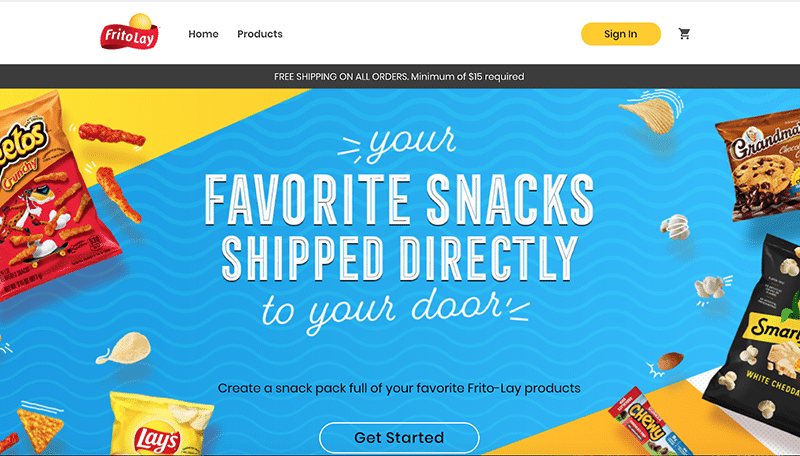
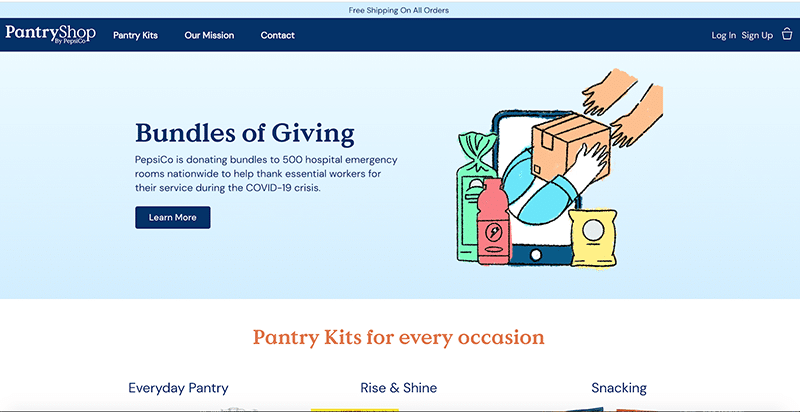
What does that mean for smaller direct to consumer brands? More competition. Soon, we’ll be looking back wistfully at the early 2010’s, remembering when cheap social media marketing + the right influencers could successfully launch a brand. “Today’s environment suggests that that model is no longer sustainable,” says Len Schlesinger, professor at Harvard Business School. “Success today requires an understanding of both evergreen business basics, and also the lasting ways in which the DTC model has permanently reshaped the industry.”
Times are changing. Are you taking advantage of these powerful marketing trends? If not, what would it look like to adopt just one of these trends to grow your food business?
If you feel at sea in the COVID-19 marketing world, ROOT Marketing and PR has both the team expertise and the passion to help steer you through the changing climate. Connect with us today.
Author Kristine Root
Kristine Root is a branding and marketing authority with over a decade of experience leading market research, positioning, brand development, and planning for food and wellness brands. She holds a BA in Marketing Communications from Gustavus Adolphus College and digital marketing nano degree from Udacity. Kristine manages brand and marketing strategy for ROOT Marketing & PR, where she designs growth marketing programs, and directs strategic initiatives for ROOT clients looking to position themselves for market expansion.

